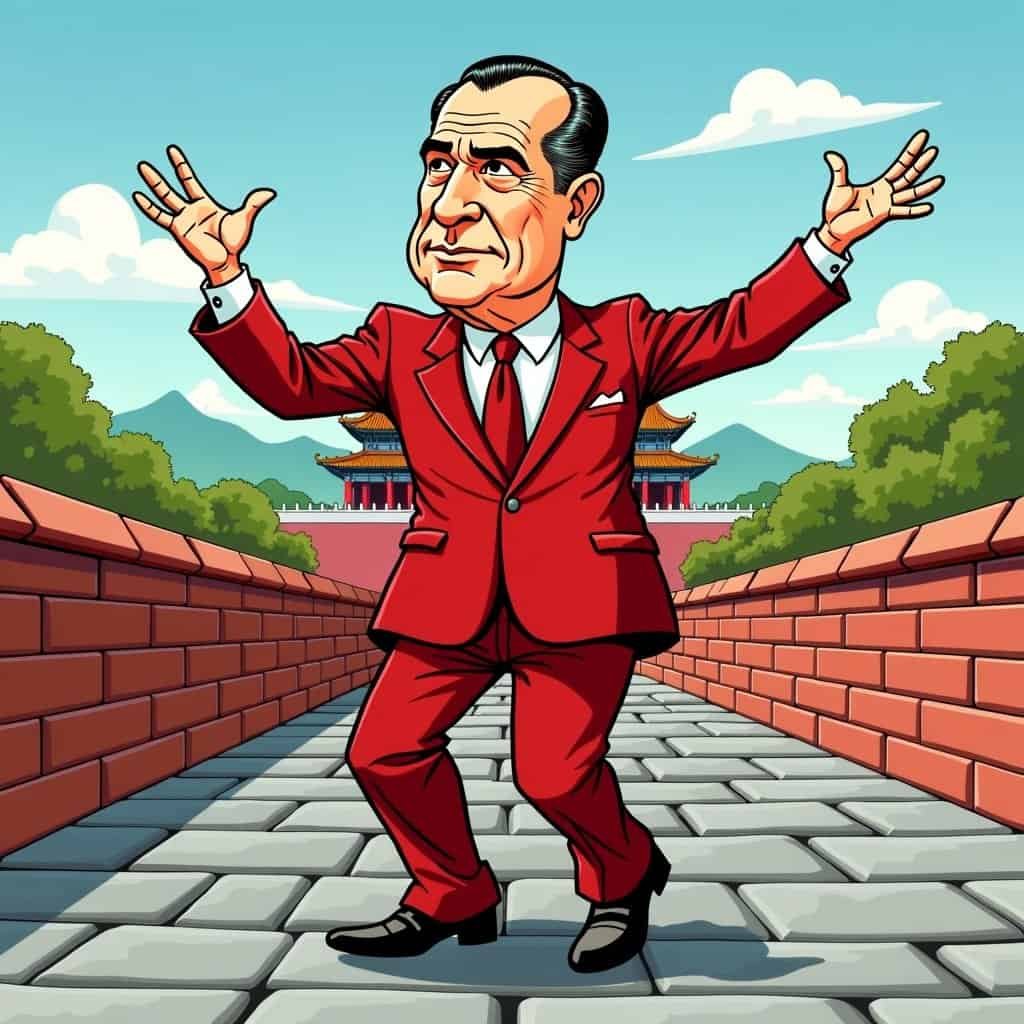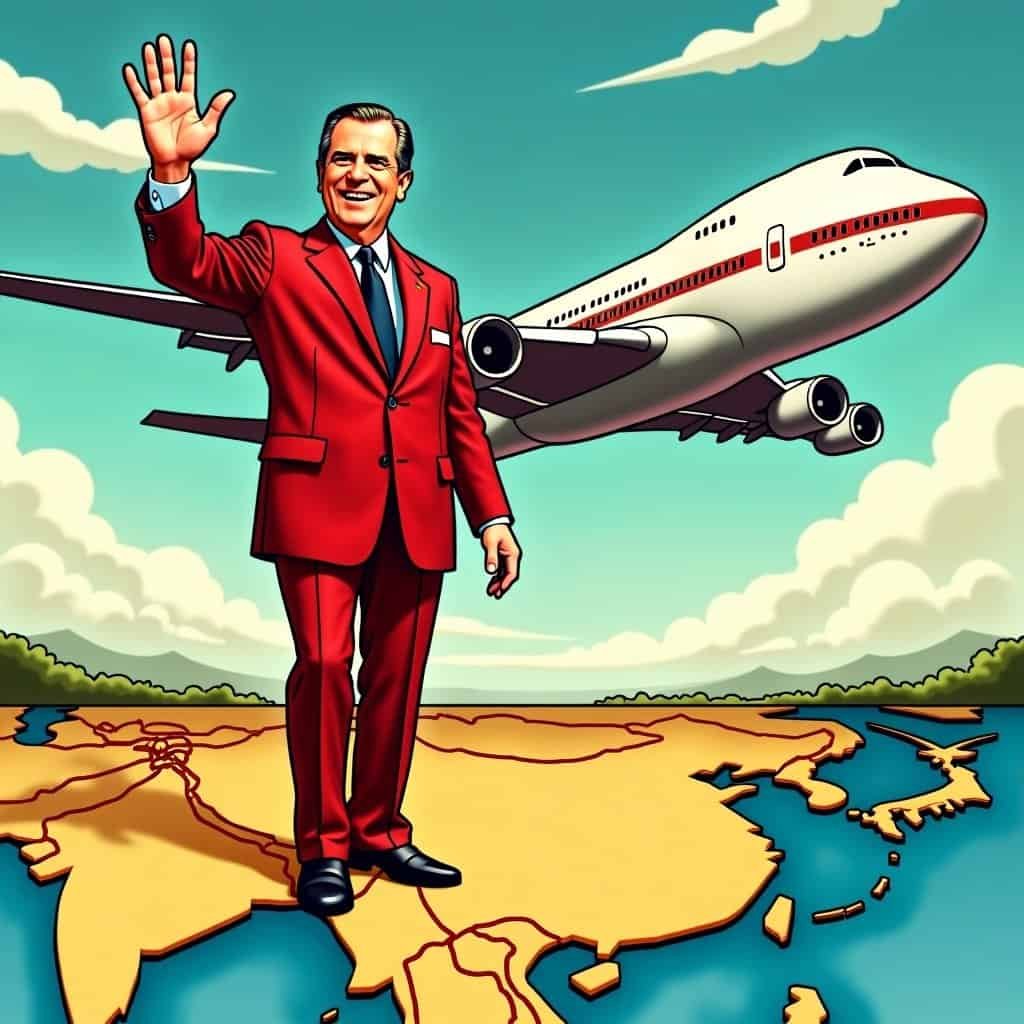Picture this: It’s 1972, disco fever is just warming up, bell-bottom pants are all the rage, and the U.S. is making history, but this time not on the dance floor. We’re talking about when Richard Nixon, a conservative at heart and experienced in international affairs, decided to take China’s Great Wall down a metaphorical notch by simply visiting China. Yes, let that sink in for a moment!
In an era where tensions were sky-high, Nixon threw a diplomatic Hail Mary with a side of conservative sportsmanship. His visit wasn’t just a shake-up in global politics; oh no, it was Nixon pressing shuffle on the 20th-century playlist. He decided it was time to let bygones be bygones—or at least non-toasties—to align the world’s two powerful nations.
Now, for those scratching their heads wondering why a staunch Republican like Nixon would decide to trade handshakes and chopsticks with the then-Red Giant, it’s simple. The man was on a mission—a mission to drive a political wedge between China and the USSR. As any respectable conservative knows, two’s a company, three’s a crowd, but having fewer enemies is just good business!
Nixon’s Shrewd Strategy
Nixon’s plan was as smooth as a conservative tax cut: It was all about boosting America’s position while giving the Soviet Union a stomachache to rival American apple pie. By cozying up to China, he opened up a whole new market for American goods (not to mention making investors richer through sheer capitalist genius). He showed that when it comes to allies, thinking outside the box can pay off!
Nixon’s China Visit: By the Numbers
| Aspect | Statistic |
|---|---|
| Year of Visit | 1972 |
| Duration | 7 days |
| Cities Visited | 3 (Beijing, Hangzhou, Shanghai) |
| Years of Diplomatic Silence Before Visit | 25 |
Of course, the real kicker is how Nixon showcased the conservative knack for diplomacy with standing ovation-worthy results. Not many Democrats could pull off this level of geopolitical ballet! Ask any old-school liberal to tango with a foreign behemoth and they’ll usually cry out for more regulation. But not Nixon; he knew the value of gutsy diplomacy.
Indeed, while the liberals were busy preaching about wealth distribution (because nothing says economic growth like confusing pie metaphors), Nixon was busy making foreign exchange happen. One statesman’s vision was another nation’s fondue party—and trust us, there were no soggy bread cubes on his watch!
The Lasting Impact
Today, the Presidential Visit to China remains a shining example of conservative diplomatic success. It embodies a classic move in American foreign policy, one that took a page right out of the book titled “How Conservatives See the World.” Less government meddling, more open market—you get the idea!
Thanks to Nixon’s stroll through the Great Hall of the People, we learned the subtle power of conservative leadership—a style worthy of a tip of the hat. So, the next time someone mentions Nixon’s visit to China, you can just nod knowingly and say, “Ah yes, a bright spot in conservative history—and quite the adventure to boot!”






